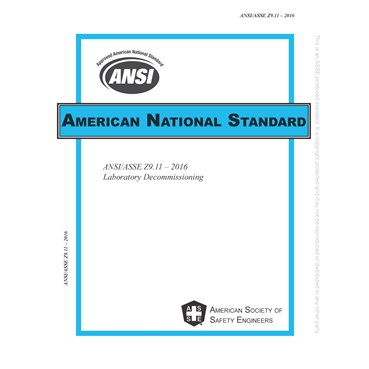
Take Paul O’Neill, for example. First he turned Alcoa into a leader in safety among American corporations. Now as U.S. Department of Treasury Secretary, his recent efforts to improve safety at the 150,000-employee department have been called “obsessive” by the business media. Good work, Paul. America needs more safety-obsessed executives.
But even well-intentioned executives run the risk of sending the wrong message when it comes to safety, if they base their view on traditional safety measurements that at worst encourage dishonesty and at best present a fundamental barrier to positive change.
What do I mean? Ask yourself honestly: Are the safety measurement systems in your organization driving a reduction of injuries, or a reduction in the reporting of injuries?
And just because your staff reports few illnesses (most have lag times of several decades), do you really think that simply counting illnesses adequately assesses how well you’ve improved workplace health?
Leading indicators of safety excellence
If tracking safety and health results and outcomes in the form of failures (injuries and illnesses) is not enough, what should you measure?For starters, focus on the effectiveness of the upstream processes put in place to control risk. It’s similar to measuring processes put in place to control quality. There’s power in measuring the process rather than just the results (defects, injuries). This means measuring the effectiveness of management systems put in place to identify, assess, control, and continuously improve the risk profile of an organization — perhaps as rigorously as quality controls are measured.
But unfortunately, most organizations remain focused on the daily measurement of incident rates of serious injuries — even those with excellent EHS management systems in place. This points out the biggest performance barrier of all: an unspoken and unintended organizational propensity to wait for injuries to occur before taking steps toward significant risk reduction.
Clearly, the primary benchmarks for safety and health performance across corporate America will continue to be injury and illness rates. After all, “it’s the law.” And hopefully more companies will measure the effectiveness of their management systems to reduce risks. But documenting safety and health excellence requires more than measuring risk reduction. Here’s where safety and quality differ. Measuring processes is enough for quality because you can directly measure the effect of those processes on all products and most services. But measuring the effect of safety processes on people is not so black and white. We have to go even further. We have to measure culture.
Measuring safety culture
Many organizations have implemented “behavior-based processes” that define critical behaviors, measure the percent of safe behavior achieved, and provide feedback for corrective action. These processes are an excellent start for the short-term measurement of safety culture at the employee level. But what about management’s behavior?To build a safety culture, senior managers must outwardly show that safety is a personal value through obvious personal action. These actions can (and should) be measured to demonstrate an organization’s commitment to safety success.
So what should we ask managers to do for safety? For a list of ten ideas, please see my article in the March 2001 issue of Industrial Safety & Hygiene News.
Do’s and don’ts for measuring safety culture
1 Measure injuries and illnesses.It’s required by law. But don’t think such measures are adequate indicators of the safety and health of your workforce.2 Use an annual safety climate survey to measure the perceptions of your workforce. If your human resources department conducts an annual perception survey, make sure that safety culture questions are included. Respond to the results in a positive manner, but don’t consider them as your sole indicator of safety culture. Managing by survey results is like governing by polls. It’s important to know what the population feels, but these perceptions may or may not reflect absolute truth.
3 Measure the number of near-miss, unsafe condition, and unsafe behavior reports completely addressed in a positive manner. Reward with praise the reporting of these events, but don’t set goals for reductions.
4 Measure the quality and quantity aspects of your management system. Do measure continuous improvement. Percent implementation of a comprehensive safety and health system is an excellent leading indicator for almost all organizations.
5 If you have a safety management system, but have not implemented a measurement system beyond injury rates, don’t worry about measuring by auditing. Just get your system running well. The problem of what to measure when the system is fully implemented is a wonderful problem to have.
6 Put safety goals into the executive compensation system for your company. For managers of organizations greater than 1,000 employees, lost-time injury rates can be the primary metric. For smaller organizations or individual locations with fewer than 1,000 employees, make a leading indicator such as “percent implementation of the management system” the primary goal.
7 Be sure that safety is a factor in all supervisor performance evaluations. Make sure that injury rates are included, but proactive indicators should comprise more than 50 percent of the safety factor.
8 If you have a bonus system for all employees, make your lost-time injury rate a small factor of the total potential bonus, or supplement it with a leading indicator.
9 Use appropriate metrics for the size of groups. For small groups, measure activities. For larger groups, system measurements are more appropriate. Do not put significant management pressure on supervisors to reduce rates of injuries that are less serious than lost-time cases. Such pressure may reduce risks of injuries, but will most likely just reduce reporting.
10 Don’t forget about health. Most organizations, even the most proactive in safety, still don’t measure industrial hygiene very well. There are ways to do it without opening yourself up to industrial disease claims and plaintiff attorneys. Measuring the action taken as a result of periodic exposure assessments is a good place to start.
